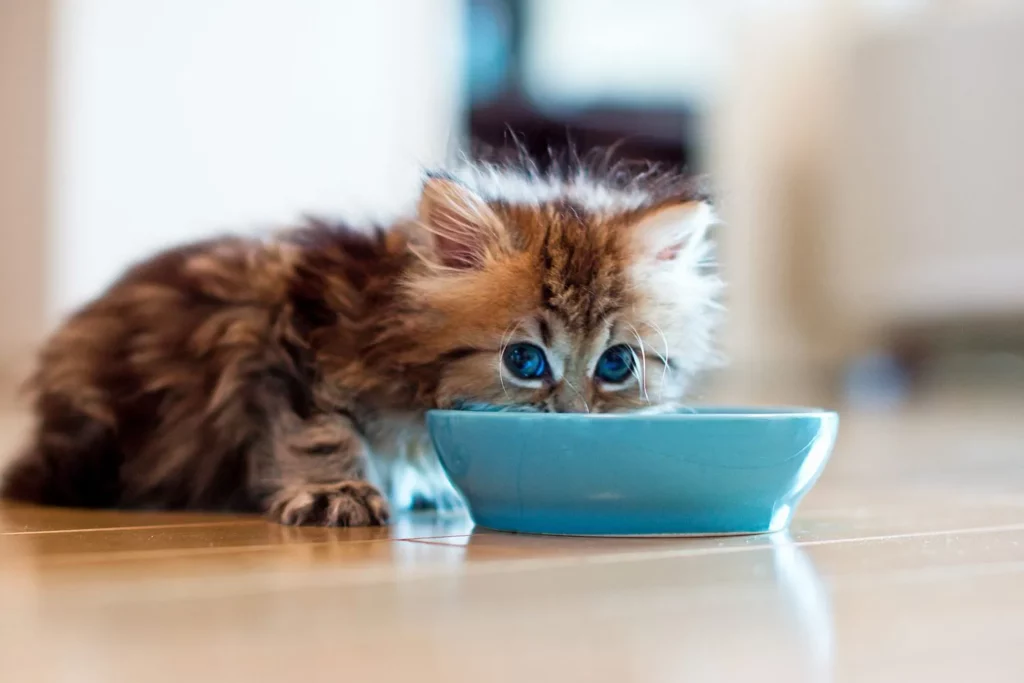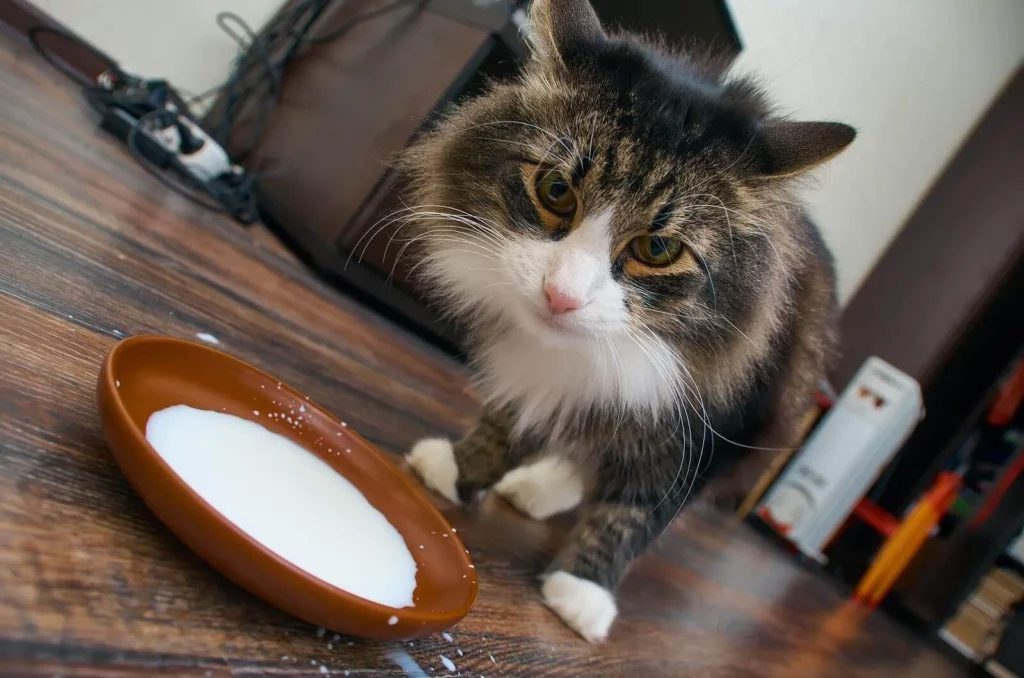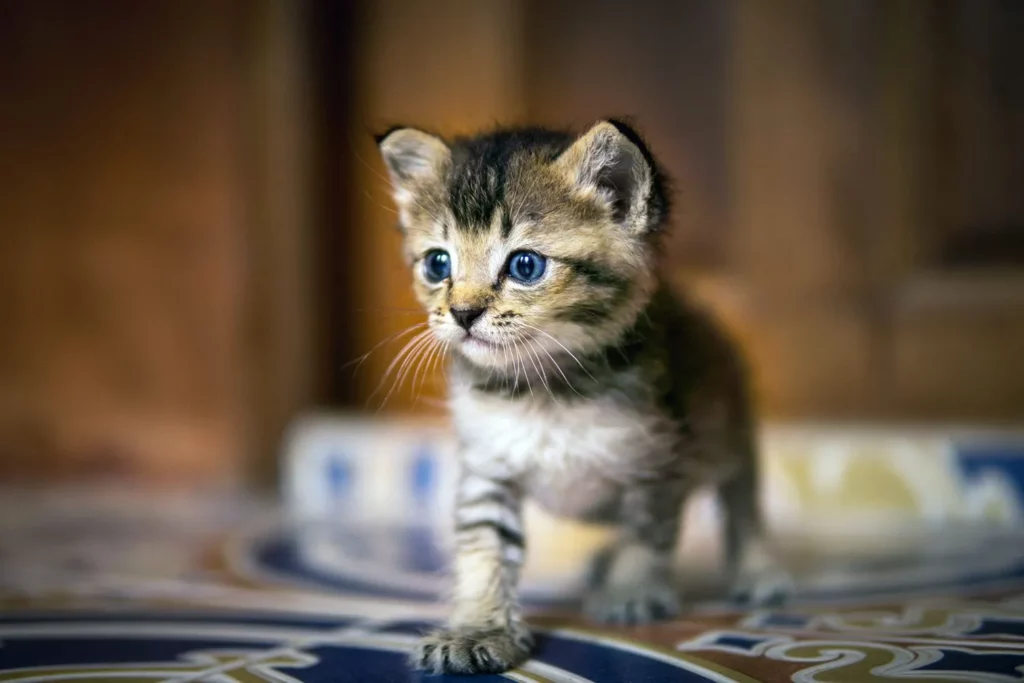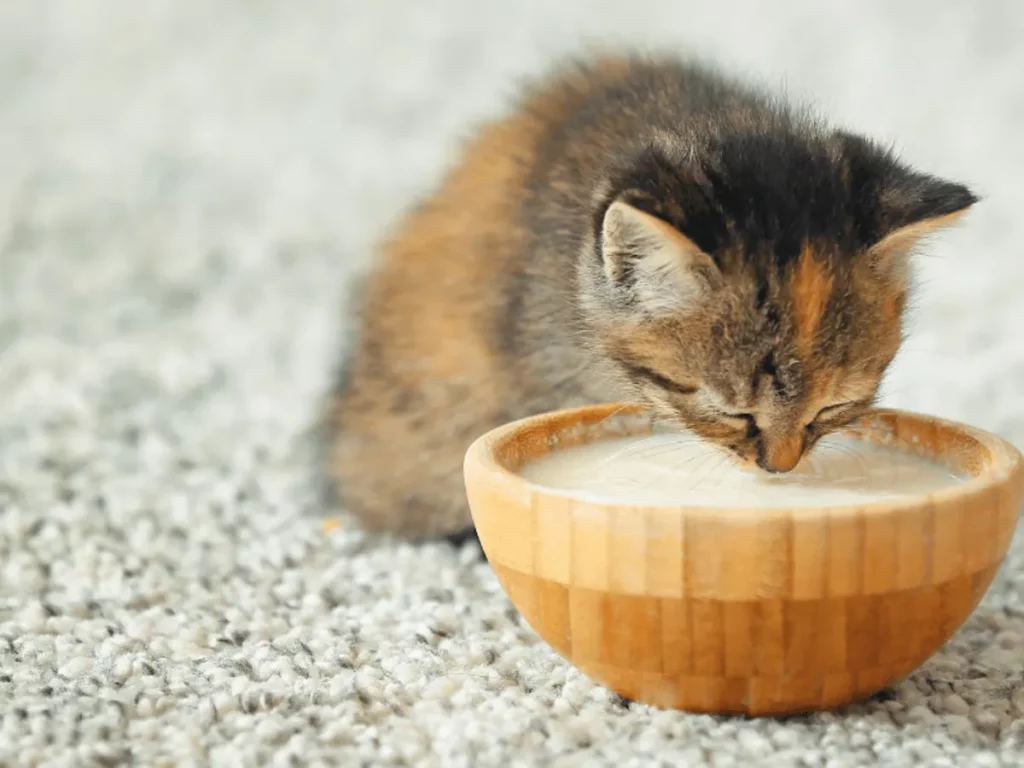Are you wondering when kittens start eating food and drinking water? Here, you will get to know when kittens start eating food and drinking water.

Kittens are adorable and playful young cats, transition through various stages of development, and understanding their dietary needs is crucial for their health and well-being.
At birth, kittens are entirely dependent on their mother’s milk for nourishment.
Interestingly, the mother cats produce colostrum during the first few days after birth, which is packed with essential antibodies vital for the kittens’ immune system development.
Nursing typically occurs for the initial four weeks of a kitten’s life.
Around three to four weeks, kittens start showing curiosity about solid food.
Also, this marks the beginning of the weaning process.
It’s recommended to introduce wet or dry kitten-specific food softened with water to facilitate the transition. Gradually, they start nibbling and exploring solid food textures.
As they grow, their nutritional requirements evolve, prompting the question: when do kittens start eating food and drinking water?
When Do Kittens Start Eating Food and Drinking Water?

Kittens start eating food and drinking water at around 4 weeks of age. Also, this stage marks the beginning of the weaning process.
Furthermore, kittens at this age start showing curiosity and interest in solid foods. It’s an ideal time to introduce specially formulated wet kitten food or a mixture of wet food and kitten milk replacer.
They might also start experimenting with drinking water, although their main source of hydration and nutrition remains their mother’s milk or wet food.
Gradually, as they grow and become more independent, they start consuming more solid food and drinking water.
When Do Kittens Start Drinking Water?
Kittens typically start drinking water around the time they begin weaning, at about 3-4 weeks of age.
While their primary source of hydration and nutrition is initially their mother’s milk or kitten milk replacer, introducing a shallow water dish at this stage encourages them to start drinking water.
They might not consume significant amounts initially, but they begin to learn to lap up water as part of their growing independence.
When Do Kittens Stop Drinking Milk From Their Mother?

Kittens stop drinking milk from their mother from around 4 weeks to 6 weeks of age.
As kittens begin eating more solid food, they gradually nurse less frequently.
By around 8 weeks, they generally become fully weaned and stop relying on their mother’s milk as their primary source of nutrition.
However, the gradual transition to solid food is crucial to ensure they’re obtaining essential nutrients, even after weaning from their mother’s milk.
When Should Kittens Start Eating Wet Food?
Kittens usually begin to eat specially formulated wet kitten food around 4 weeks of age.
Also, this period marks the early stages of the weaning process. At around 4 weeks, kittens begin to show interest in exploring solid food.
In addition, introducing wet food helps in their transition from their mother’s milk or kitten milk replacer to consuming solid food.
The wet food should be formulated for kittens to ensure it meets their nutritional needs during this important stage.
When Do Kittens Start Drinking Milk?

Kittens start drinking their mother’s milk immediately after birth. Also, they rely entirely on their mother’s milk for the first few weeks of life.
This milk provides crucial nutrients and antibodies necessary for their growth and development.
As they grow and start weaning, they gradually transition from solely drinking their mother’s milk to consuming solid food and drinking water.
What to Feed Weaning Kittens?
During the weaning stage, it’s important to provide specially formulated wet kitten food.
Also, this food should be rich in the essential nutrients necessary for their growth and development.
To facilitate the transition, the wet food can be mixed with a kitten milk replacer to create a softer consistency.
This gradual introduction to solid food ensures they receive the nutrients they need while adjusting to eating solid food.
Related Searches:
